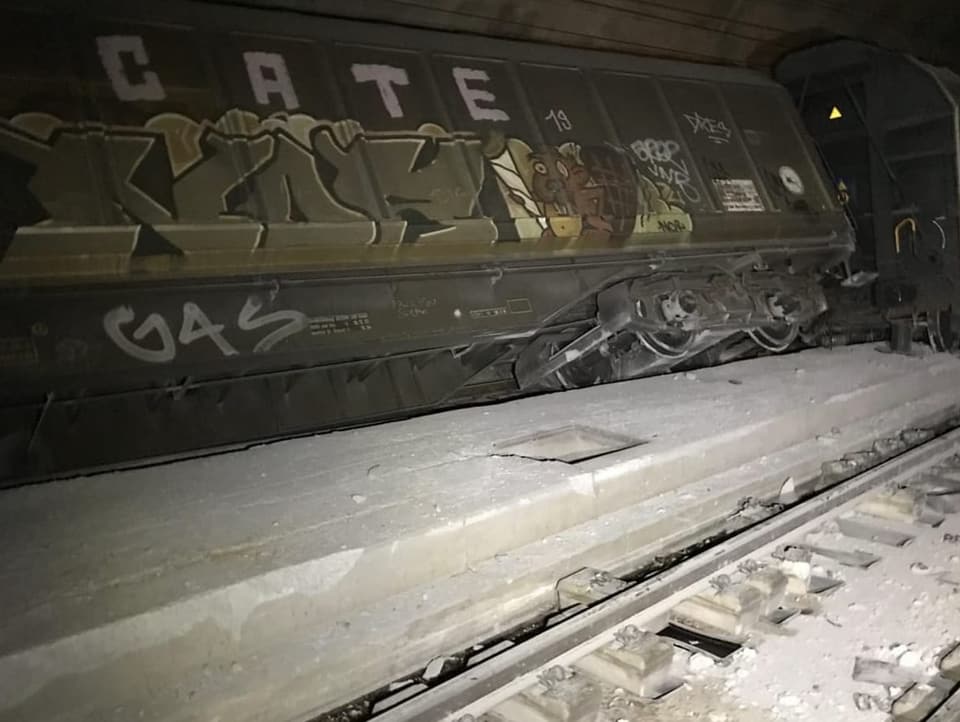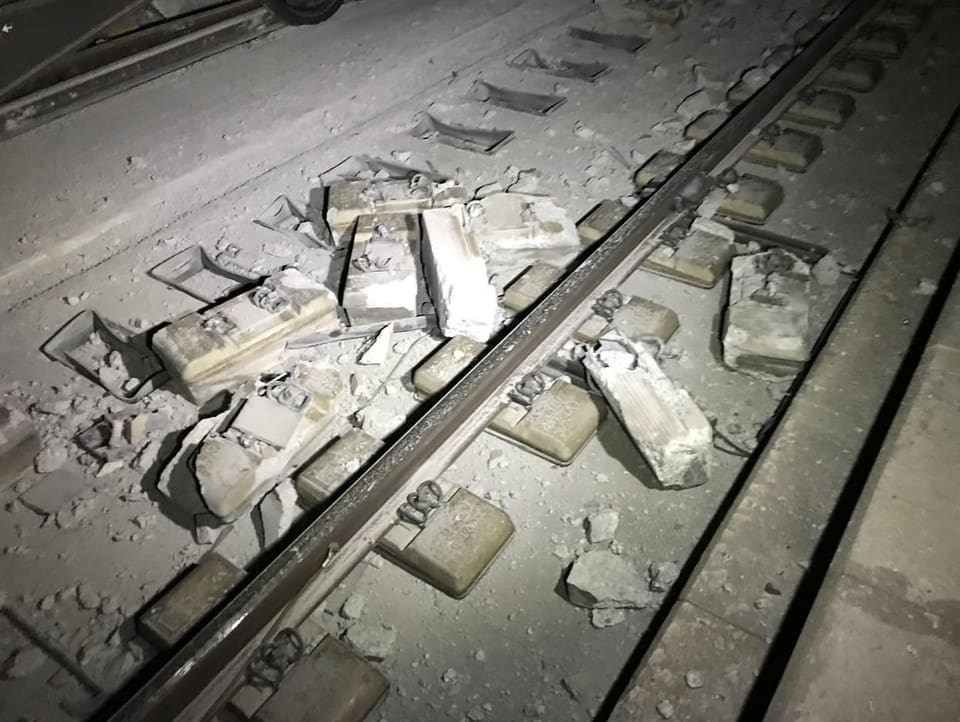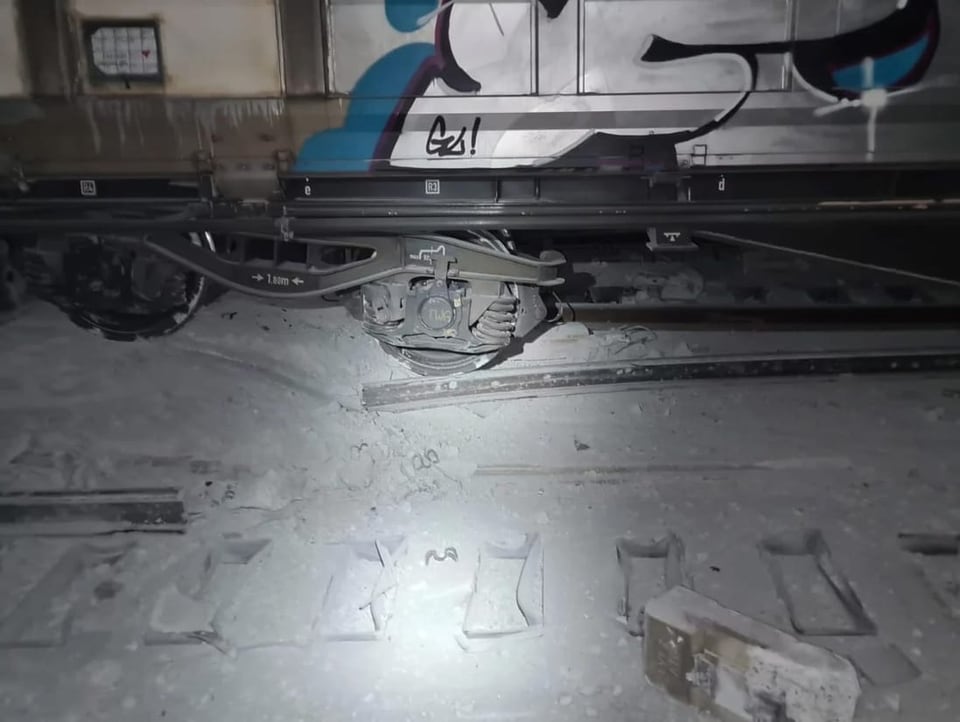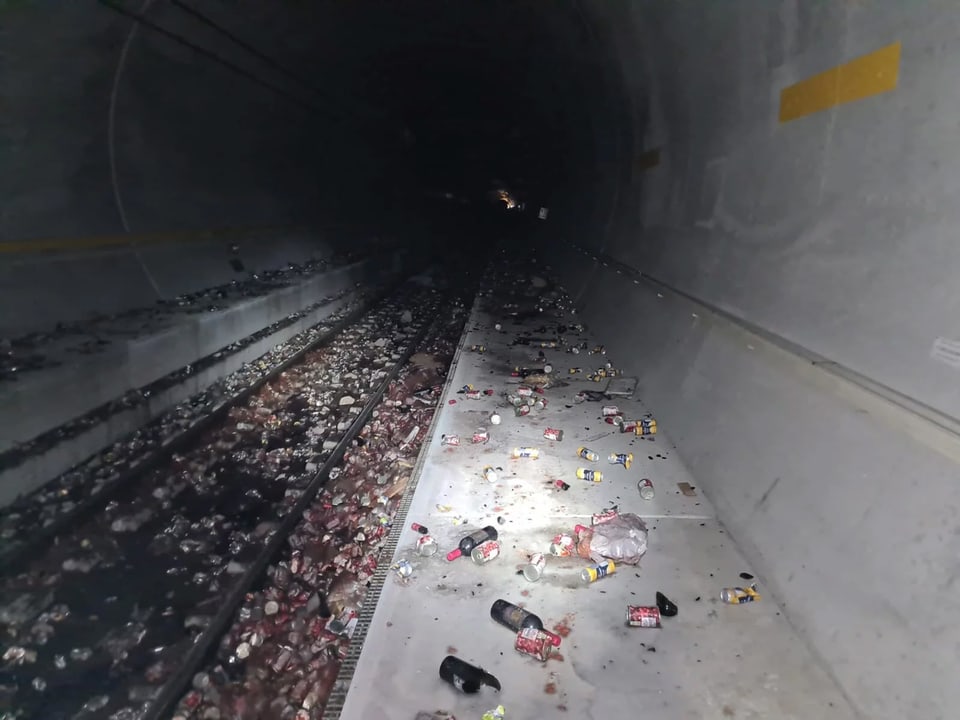After the derailment around two weeks ago, the first freight trains have been running through the Gotthard Base Tunnel since midnight. By 4 p.m. on Wednesday afternoon, 45 trains had already passed through the east tunnel without a hitch, and 30 more are to follow by the evening. SBB media spokesman Reto Schärli on the current state of affairs and why SBB cannot have a say in passenger compensation.
SRF News: At the beginning of the week, the freight transport industry demanded that capacities be secured. Can you guarantee that?
Reto Schärli: Meanwhile, 100 trains per day can run through the tunnel, plus 30 trains over the panoramic route. This should be enough if we look at last fall’s figures. At that time, 120 freight trains drove through the tunnel.
Freight train derailed in the Gotthard tunnel
Has the reopening of the tunnel for freight traffic eased the situation?
Yes. Various companies have meanwhile had to make do with other means of transport. A certain amount of normalization is now taking place, and bottlenecks will continue to occur on certain peak days. Detours will still be necessary.
The passenger trains still run on the mountain route. Pro Bahn demands compensation for passengers. Is SBB accommodating customers here?
The collective bargaining organization, the public transport industry, would have to decide whether there are exceptions to the tariff. SBB cannot answer this question. General price reductions are not planned, as we have communicated. This also applies to other construction sites. For example, we have longer travel times in the Rhine Valley during eight months, and the usual conditions apply there too. It should also be emphasized that when the new Gotthard tunnel was opened, there were no price increases for tickets, although it was much faster to get to Ticino.
Is it possible that the east tube will be used again for passenger trains before the west tube is opened?
This is currently being examined, a new evacuation and security concept is needed. It is clear that the whole thing would be planned for the weekend so that freight traffic is not restricted during the week.
How are the repairs going?
The clean-up work is in full swing. It is very time-consuming to salvage the damaged wagons, and the majority of the 16 derailed wagons are still in the tunnel. Some of the wagons were so badly damaged that they have to be dismantled inside the tunnel before they can be taken out of the tunnel. At the same time, the SBB is planning the repair work, there will be a lot to replace, many systems were damaged. The whole thing will take several months.
What happens to the freight trains that are currently not running?
A large part of the inland freight traffic could be handled via the mountain route. There were restrictions primarily in transit traffic or in combined domestic traffic. Some of these goods had to be transported by road or other routes such as the Lötschberg-Simplon tunnel.
The conversation was led by Matthias Rusch.





